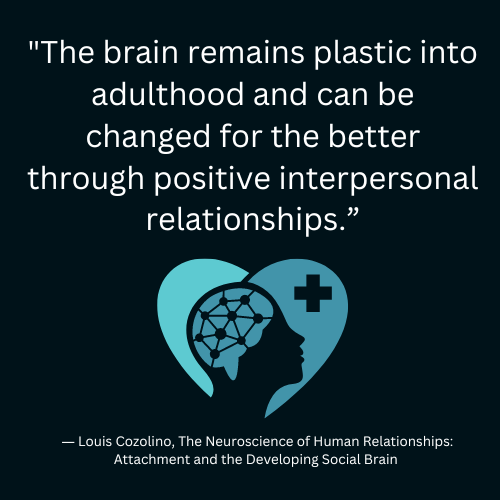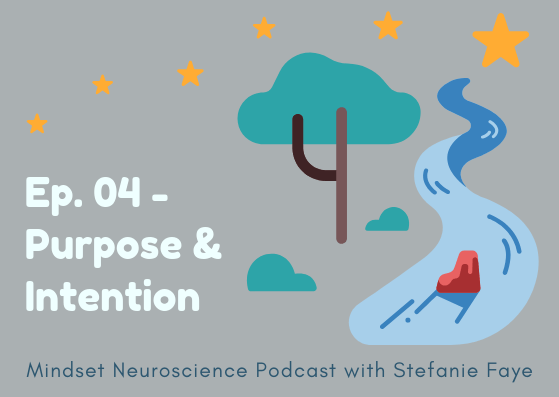"The brain remains plastic into adulthood and can be changed for the better through positive interpersonal relationships.”
― Louis Cozolino, The Neuroscience of Human Relationships: Attachment and the Developing Social Brain

How we respond to danger (perceived and real) and WHO we turn to (including ourselves and others) in the midst of uncertainty and threat is one of the most powerful foundations for future behavior and how we process information.
The self-regulating abilities of the people around us during times of distress, dysregulation and danger and uncertainty play a major role in how accurately we predict, prepare for and respond to future situations. The brain perceives these self-regulating abilities through its detection of frequencies and waves emitted by micro-movements from our muscles and bones (in relation to our internal state).*
Attachment and relational abilities are so essential to our brain functioning that the Dynamic Maturational Model of Attachment looks at challenges in relationships as distortions in information processing (Fairnfield, 2014).
*all of us have limited information from which we make decisions - we use the best information we have, but the best we have is ALWAYS limited - systems theorists call this bounded rationality
Resilience-by-affiliation
Much of the current research on resilience focuses on fear physiology and stress neurobiology. Affiliative neuroscience seeks to understand this as well but also what cultivates strength and stamina.
Within this, pioneer researcher Dr. Ruth Feldman defines resilience as the "hallmark of human achievement", which includes the ability to (Feldman, 2020):
- Face life’s hardships with courage and perseverance
- Enjoy intimacy and wider social circles
- Have empathy and compassion to others’ misfortune
- Foster a sense of industry and agency towards long-term goals
- Access creativity, vitality and meaning
- Be free of debilitating symptoms despite early adversity or current trauma
Affiliative neuroscience points to coordinated actions of sociality as a mechanism for increasing endurance, diversity and adaptation, thus optimizing us as a species.
Two key words are CRITICALLY important for updating our brain's affiliation-based algorithms...
Those words are WHO and NOW.
WHO you surround yourself with NOW can help update the algorithms and sociality-based internal and external responses you have to stress.
Many people have histories with others that lead their nervous system to default into dysregulation or make them doubt their safety and potential.
No matter what a person's history is, however, it is always helpful to find ways to surround ourselves NOW with people WHO help activate networks that enable a sense of self-trust and safety.
This can come in the form of people you interact with, but also online mentors, groups, book review communities, etc...
People are feedback systems that provide our brain data to build its algorithms and problem-solving, nervous system-regulating abilities. The more regulated the people are who we surround ourselves with, the more sensory-motor inputs our nervous system receives to inform its own internal working models.
You, as a human super-learner, have the ability to update your brain’s algorithms by updating the data you allow into your awareness.
This includes who you interact with, as well as where you allow your attentional circuits to go when you are on your own.
The more intentional you are about being with, observing, and thinking about people who offer a feeling of alignment, safety and wellbeing, the more you will have access to neural circuits that are self-regulating in times of distress.
Who are you surrounding yourself with this week? Who are you choosing to watch, observe and listen to (online and in person)?
References:
Crittenden, P.M. (2005). Attachment Theory, Psychopathology, and Psychotherapy: The Dynamic-Maturational Approach.
Fairnfield, S., & Stokowy, M. (2014). The Dynamic-Maturational Model (DMM) of attachment. In P. Holmes & S. Farnfield (Eds.), The Routledge handbook of attachment: Theory (pp. 49–72). Routledge/Taylor & Francis Group.
Feldman, R. (2020) What is resilience: an affiliative neuroscience approach, World Psychiatry ;19:132–150)
** i also go into Feldman's research and the DMM in depth in my book
|



